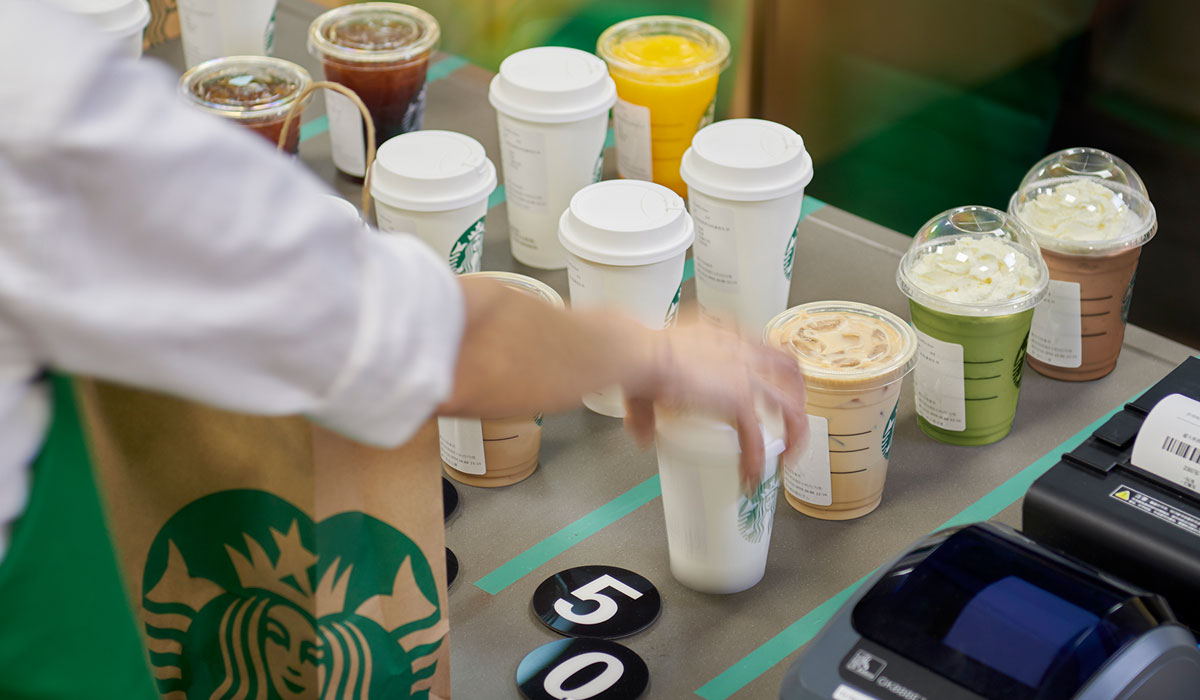Starbucks has acted aggressively since COVID-19 landed full force in the U.S. It’s decision to switch to a take-out and delivery-only model was a first among major restaurant chains and spurred a series of announcements early last week that carried throughout the following days.
But it still wasn’t enough.
U.S. EVP and president Rossann Williams, who also oversees Starbucks’ Canada corporate business, said the java chain recognized “the challenges and complexities of trying to reduce ‘social gathering’ in our cafes even as we removed furniture and reduced our service to grab-and-go.”
STAY UP TO DATE WITH OUR CORONAVIRUS LANDING PAGE
Essentially, people were still congregating at Starbucks, despite a lack of seating. Cafes in some areas, Williams said, continued to experience high traffic. In response, Starbucks decided Friday to close access to its cafes altogether and limit service to drive thru only. The company said it would do so for two weeks. There’s no telling if that target date will stick or not as the unprecedented situation remains dynamic.
Starbucks added it would make some exceptions for cafes in or around hospitals and health care centers, and this initiative would spread across company-run stores in the U.S. and Canada. Licensed partners are making decisions for their properties.
Starbucks’ runs roughly 9,000 corporate locations stateside, with licensees overseeing another 6,000.
Delivery through Uber Eats, which is now live in 49 cities, remains available as well. Starbucks also recently created a how-to guide for digital ordering on its website.
It’s a massive move sure to stretch Starbucks’ bottom line near-term. Nearly 60 percent of restaurants have drive-thru capabilities, a number that has climbed in recent years.
Starbucks faced some pressure internally to make this bold change. More than 35,000 people, as of Friday, had signed a Coworker.org petition calling for Starbucks to suspend its business in an effort to discourage large gatherings.
“Your understanding, flexibility and straight talk are immensely appreciated, and much needed in this moment,” Williams wrote in a letter to employees, adding, “The magnitude of managing through this situation is the single biggest challenge many of us have faced in our lifetime, and I am continually moved by your compassion for each other, our customers and our communities during this exceptionally difficult time.”
“With daily news from friends and family members getting laid off and businesses closing, we need one another more than ever. We need to be a different kind of company.”
In addition to its decision to lock the front doors, Starbucks addressed employee benefits during the coronavirus crisis. The chain said it would pay all employees for the next 30 days, whether they come to work or not. “We are also encouraging other major employers to do the same to support retail workers at this time,” Williams said.
Starbucks then unveiled something its calling “Service Pay,” where employees who are able and choose to continue to come to work will be eligible for an additional $3 per hour for shifts as scheduled March 21 to April 19.
If an employee decides not to come to work, they can continue to use Starbucks’ earlier announced “Catastrophe pay” benefit, where anybody diagnosed or exposed to COVID-19, or people who need to take extra precautions, like those 60 years or older, are eligible for up to 14 days of pay so they can self-quarantine, regardless if they’re symptomatic
Starbucks said many employees showed up Saturday to help open drive thrus and fill in at short-staffed neighboring stores.
The company noted its redeploying employees as much as possible. It also added a new temporary food benefit and employee discount systemwide.
Employees can access free counseling through Starbucks Employee Assistance Program and Headspace for mindfulness and meditation as well. And a new mental health benefit through Lyra Health is coming April 6.
Furthermore, Starbucks temporarily expanded its Care@Work program (from 10 back-up care days to 20) to provide support for employees needing additional backup childcare options as a result of school closures. The option provides employees with the option to be reimbursed up to $125 per day for use of their personal network of backup caregivers and centers (caregivers who are not part of the Car@Work network, for example).
The company instructed employees at its support centers in Seattle and Toronto to work remotely and conduct only “business-critical” air travel through April 24.
Lastly, Starbucks offers hardship grants through its CUP Fund, which provides aid to employees experiencing financial hardship. The chain previously said it would invest up to $10 million in the option (a financial assistance program started in 1998 where employees can donate to help each other) and other global resources to support employees’ needs beyond pay.
For customers, Starbucks also announced its delaying delay the expiration of all rewards program Stars scheduled to expire between now and June 1.










